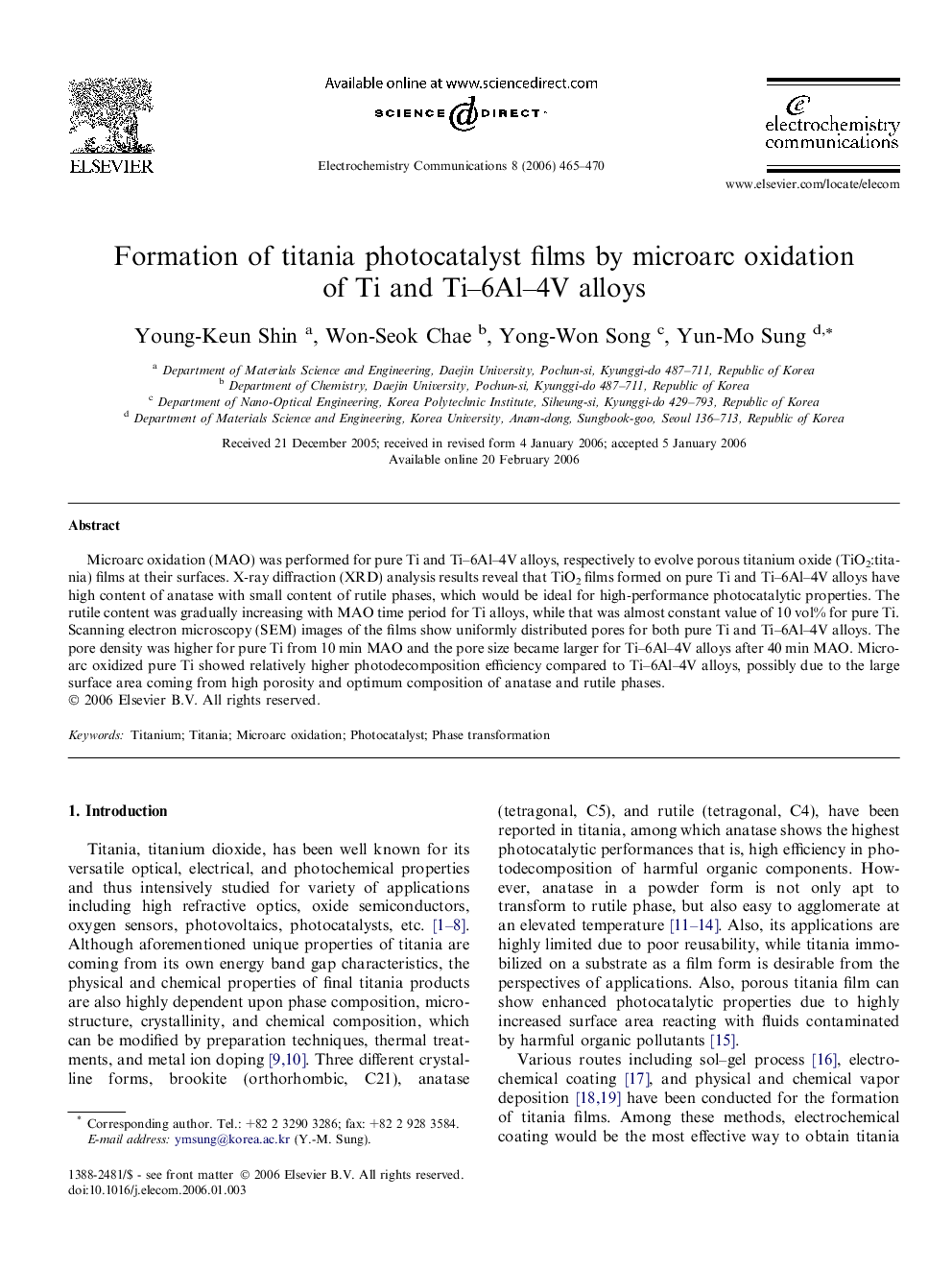| Article ID | Journal | Published Year | Pages | File Type |
|---|---|---|---|---|
| 182723 | Electrochemistry Communications | 2006 | 6 Pages |
Microarc oxidation (MAO) was performed for pure Ti and Ti–6Al–4V alloys, respectively to evolve porous titanium oxide (TiO2:titania) films at their surfaces. X-ray diffraction (XRD) analysis results reveal that TiO2 films formed on pure Ti and Ti–6Al–4V alloys have high content of anatase with small content of rutile phases, which would be ideal for high-performance photocatalytic properties. The rutile content was gradually increasing with MAO time period for Ti alloys, while that was almost constant value of 10 vol% for pure Ti. Scanning electron microscopy (SEM) images of the films show uniformly distributed pores for both pure Ti and Ti–6Al–4V alloys. The pore density was higher for pure Ti from 10 min MAO and the pore size became larger for Ti–6Al–4V alloys after 40 min MAO. Microarc oxidized pure Ti showed relatively higher photodecomposition efficiency compared to Ti–6Al–4V alloys, possibly due to the large surface area coming from high porosity and optimum composition of anatase and rutile phases.
